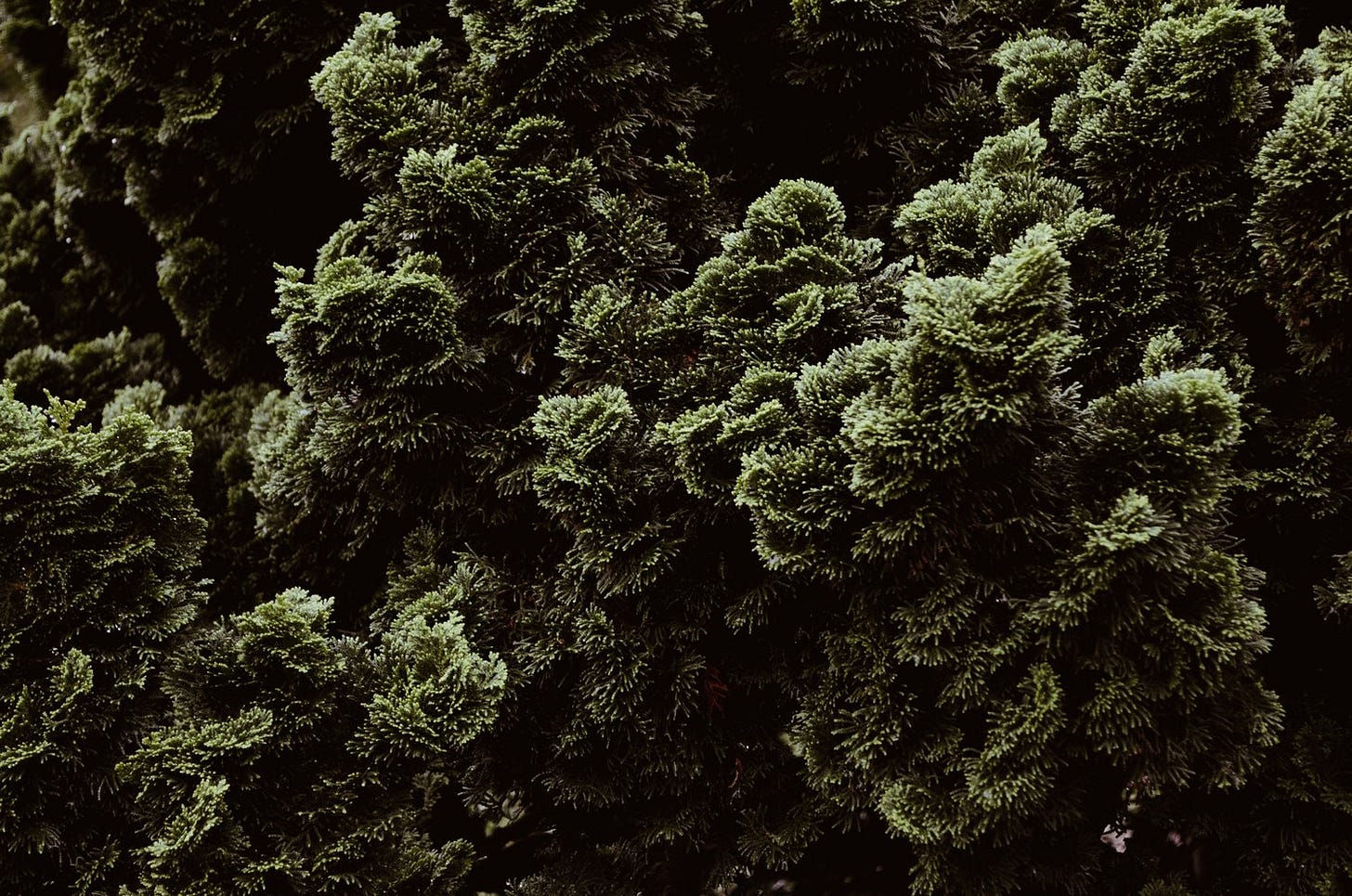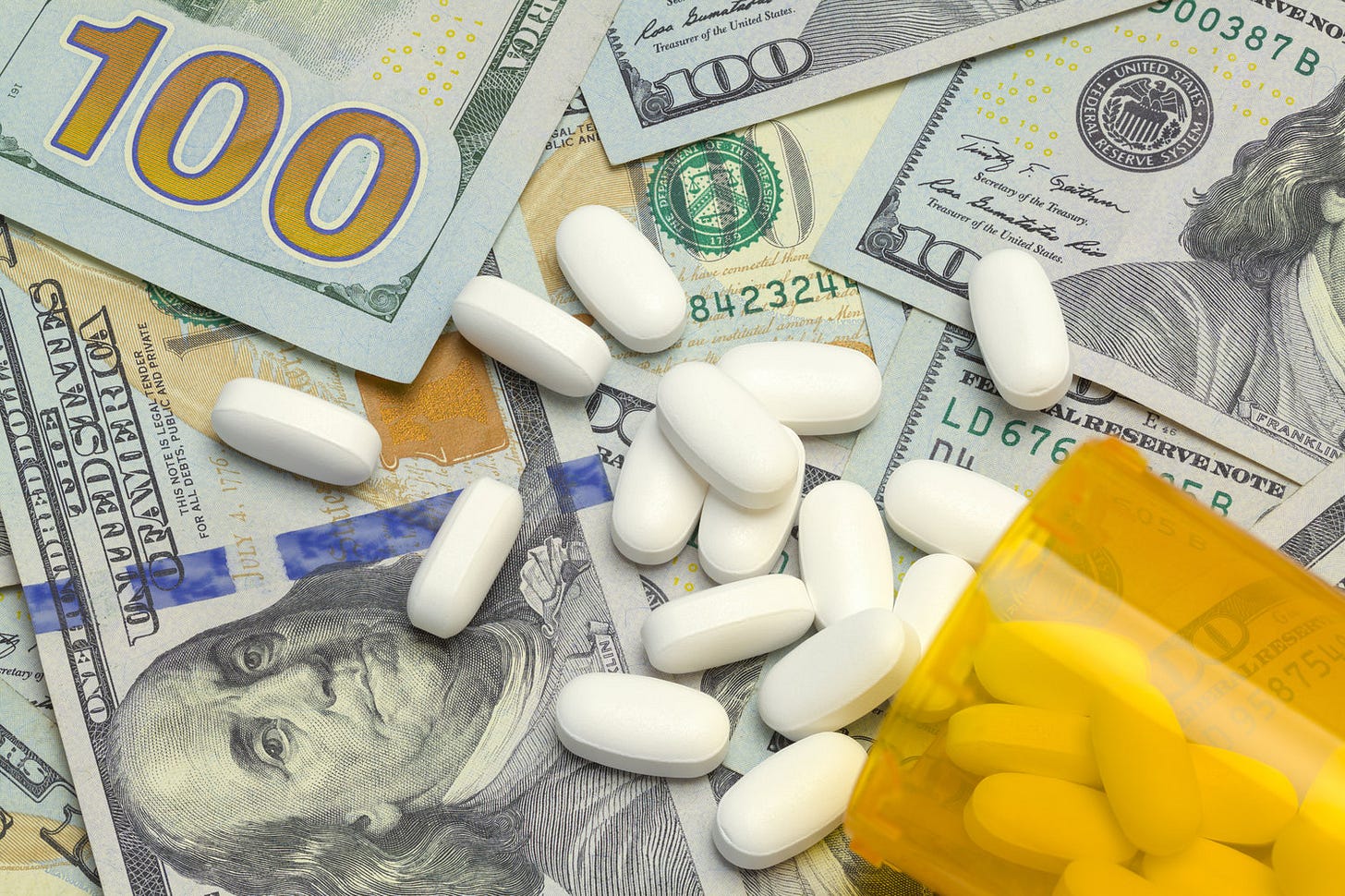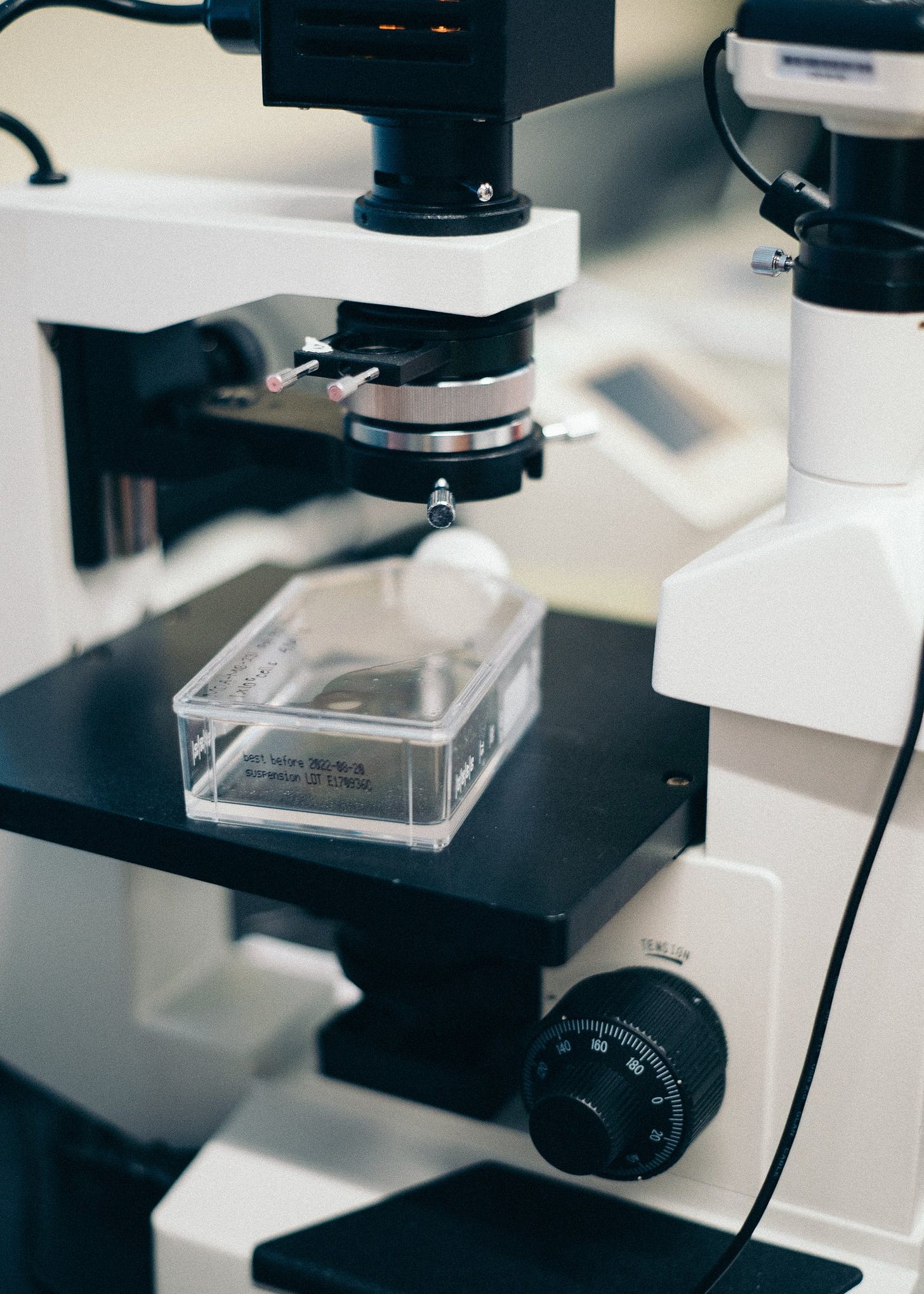Bioprospecting: Sifting Through Nature's Medicine Cabinet
Beneath the lush foliage and amidst the wild blooms, there lies an untapped pharmacy — brimming with potential solutions to humanity's most pressing health challenges.
Prior to the early 1940s, death from infection was common.
Catch a bug like pneumonia or strep throat, and you may very well have died from it.
Enter Alexander Fleming, the scientist who discovered the first antibiotic, penicillin.
He didn’t create this compound — he merely isolated it from a common mold, the type you may find on old orange peels or bread.
Thanks to this medical advancement, death from infectious diseases is no longer an issue for most people.
This critical development came to us through a process known as bioprospecting.
There are many other examples of medicines that were sourced through bioprospecting, including chemotherapy drugs, pain medications, antidepressants, and even psychedelic drugs like LSD.
Bioprospecting remains today an essential element of new drug discovery. Here’s how it works.
The Search For New Drugs
There are an unfathomable number of things that can go wrong with the human body.
We’re constantly searching for new solutions to old problems, like our age-old war with cancer, as well as improvements to old medicines with limited efficacy (like antidepressants and seizure medications).
Additionally, drugs that were effective in the past may no longer be effective today. A great example of this is antibiotics. These medications are essential for public health but are losing their effectiveness as bacteria become resistant to their effects. This places a heavy burden on researchers to develop new drugs to replace them before it's too late and a global outbreak occurs.
Finding new drug candidates is no easy task. The majority of drug research falls flat on its back despite years of hard work and rigorous testing.
Searching for new chemicals from scratch is like finding a needle in a haystack... while blindfolded with your hands tied behind your back. There are simply too many chemical combinations possible to brute force effective medicines.
This' is why scientists look for prospective new drugs from plants and fungi.
With a long history of use and incredible chemical diversity, plants offer us a boost in drug discovery.
Based on traditional uses, scientists can look closer at the active constituents of plants used for certain conditions. Based on these findings, these chemicals can then be isolated or synthesized to create new drugs.
Drug Development Is Driven By Patent Law
The pharmaceutical industry is notoriously cut-throat.
The high cost of drug discovery and new drug development makes it important that the final profits produced from the drug remain in the hands of those who worked hard to create it. This is controlled by patent laws.
Patent laws are important. Let’s put ourselves in the shoes of these drug companies for just a moment. Imagine you spend 10 years and 1 billion dollars developing a treatment for multiple sclerosis. The drug is completed and released… you can finally begin off-setting the insane development costs you spent making it.
Once the drug is released, however, other companies realize the usefulness of this medication and begin manufacturing and selling it at a cheaper price. The reason they can sell it cheaper than you is because they didn’t dump $1 billion dollars into its development as you did.
People begin to buy your competitor’s version of the drug over yours because it’s cheaper. All your hard work and investment of time, money, and intelligence was for nothing.
This example is exactly what would happen without patent laws and would be enough to completely halt future drug development. It wouldn’t be a sustainable business practice to spend all your money paving the way for all your competitors to profit from.
Patent laws ensure that the companies spending the time and money developing new, innovative drugs are entitled to profits for the first 10 years following discovery.
Due to the high cost required to produce these drugs, it’s necessary for these companies to justify spending this money to do it.
Walking the Ethical Tightrope Of Medical Patents
Many people will argue that developing new drugs to cure disease should be done regardless of cost and that locking in profits through patent laws is unethical.
It’s important to remember that drug companies need to turn a profit to stay in business.
Profits are used for paying back the cost of drug discovery, as well as funding the development of new drugs.
I’m not arguing that medicines shouldn’t be free for all members of society — because I believe they should.
However, the only way to achieve this is to transition from market-driven drug development (pharmaceutical companies in the private sector) to government-funded development (aka higher taxes and less efficiency).
We can weigh out the options of both, but I don’t see how either is much better than the other.
Searching For New Chemicals From Natural Sources
Plants, fungi, and animals are master chemists.
Whenever we add chemicals into our body, either from plants, animals, or man-made compounds, it’s going to have an effect in some way on our bodi’s natural chemical processes.
The trick is figuring out which ones cause positive changes and the best way to use them.
Plants offer a headstart in this search through traditional medical practices.
We can identify a long list of herbal medicines for nearly any condition in nearly any part of the world. Then we can begin the long and tedious process of sifting through it using the scientific method and high-tech chemical analysis to further push this understanding.
Pharmacognosy & Plant Medicine Definitions
Medical Ethnobotany — The study of the traditional use of plants for medicinal purposes; Ethnopharmacology: The study of the pharmacological qualities of traditional medicinal substances
Pharmacognosy — A branch of knowledge dealing with the use of medicinal ingredients from plants and animals.
Phytochemistry — The medicinal use of plant extracts); and phytochemistry, the study of chemicals derived from plants (including the identification of new drug candidates derived from plant sources)
Zoopharmacognosy — The process by which animals self-medicate, by selecting and using plants, soils, and insects to treat and prevent disease.
Marine Pharmacognosy — The study of chemicals derived from marine organisms.
Pharmacovigilance — The constant checking and reassurance that drugs are safe and effective even after development has been completed.
Bioprospecting — The search for medicinal or industrially relevant constituents from organic material.
Biopiracy — The exploitation of genetic or biochemically active constituents from plants, animals, or fungi without adequate compensation to the community from which it originated.
Drugs Derived From Plants
Check out my recent article on 9 Famous Examples of Drugs That Came From Plants — where I explore drugs like Aspirin, penicillin, heroin and LSD.
Examples Of Drugs Derived From Plants
Acetyldigoxin (Digitalis lanata) — Cardiotonic
Acetylsalicylic Acid (Salix alba) — Pain and inflammation
Apomorphine (Papaver somniferum) — Pain Management
Bromelain (Ananas comosus) — Proteolytic
Caffeine (Camellia sinensis, Coffea arabica, Paullinia cupana, Ilex paraguariensis) — CNS Stimulant
Camphor (Cinnamomum camphora) — Rubefacient
Capsaicin (Capsicum annuum) — Pain Reliever
Cannabidiol (Cannabis sativa) — Cancer, Anxiety, Pain Management
Curcumin (Curcuma longa) — Anti Inflammatory
Digoxin (Digitalis lanata) — Cardiac arrythmia & heart failure
Dronabinol (Cannabis sativa) — Anorexia and nausea
Galantamine (Galanthus nivalis) — Alzheimer's Disease
Lapachol (Tabebuia impetiginosa) — Cancer
L-Dopa (Mucuna pruriens) — Anti-Parkinson’s Disease
Lysergic Acid Diethylamide (Claviceps purpurea) — Recreation
Menthol (Mentha piperita) — Flavouring agent
Morphine (Papaveraceae somniferum) — Pain
Myriocin (Mycelia sterilia) — Multiple sclerosis & other autoimmune disease
Nitisinone (Callistemon citrinus) — Tyrosinemia
Paclitaxel (Taxus brevifolia) — Cancer
Quinidine (Cinchona ledgeriana) — Arrhythmias
Quinine (Cinchona ledgeriana) — Malaria
Psilocin (Psilocybe cubensis) — Depression
Steviosides (Stevia rebaudiana) — Diabetes
Tetrahydrocannabinol (Cannabis sativa) – Nausea, recreation
Tiotropium (Atropa belladonna) — COPD
Vinblastine (Catharanthus roseus) — Cancer
Vincristine (Catharanthus roseus) — Cancer
Vinpocetine (Vinca major) — Cognitive enhancement, stroke
Yohimbine (Pausinystalia yohimbe) — Cardiovascular disease
The Journey of Bioprospecting & Drug Development
The process of drug development can take a very long time and is exceptionally expensive.
A recent paper investigating the development costs of cancer medications reported that the average spending was $648 million dollars and 7.3 years.
The process is also not as direct as you might think.
Although the development of the drug itself is usually performed by a pharmaceutical company with access to the tools and materials needed to create and test the drug, along with the marketing and legal channels to sell it.
The process actually starts elsewhere through the collaborative efforts of passionate independent researchers.
1. What Problem Are We Trying To Solve?
This is the whole point of the drug discovery and the first question that needs to be asked.
Although some discoveries are accidental, the first stage is to identify the problem that needs to be solved.
In many examples throughout history, a useful compound is discovered “accidentally” while attempting to solve a different problem.
A good example of this is the story of LSD. Albert Hofmann was trying to find compounds that could be used to treat uterine contractions but instead discovered one of the most famous psychedelics on Earth.
There are many cases like this, but it’s still necessary to have an initial goal so help dial in the discovery process.
2. Review Of Plants/Fungi Used For Solving This Problem (Traditional Use)
The next step is to identify the plants or fungi that will be further investigated to identify efficacy for the highlighted problem.
This begins by examining traditional knowledge. From here, preliminary research is done to confirm these uses and attempt to understand a mechanism of action.
Many plants and fungi already have a wide scientific evidence base. A systematic review of this research is the most beneficial for identifying the best candidate(s) before moving to the next stage.
3. Isolation & Identification Of Constituents.
In this stage of development, the raw plant or fungus material is extracted and isolated into its individual components.
This may involve the isolation of a particular chemical or separation into bulk parts (alkaloid components, flavonoid components, etc.).
4. Testing Each Compound
Each of the components isolated in the previous steps is then tested via high throughput screening, as well as further in vitro and eventually in vivo animal testing.
This is often where drug companies take over.
5. Synthesis Of The Compound
Researchers developing the drug ask the question, can it be synthesized?
There are specific laws surrounding the types of chemicals that can be patented, which generally involves some degree of modification to a naturally occurring substance.
In some cases, small changes are done to the chemical to make it more effective or to improve bioavailability (the percentage of the compound that is absorbed into the body).
Aspirin, for example, has an additional acetyl group added to the base salicylic molecule that improves absorption.
6. Pharmacokinetic Studies
Once the drug has been developed, it goes through a series of in vitro and animal testing to identify the pharmacokinetics and pharmacodynamics (how it works and how it’s absorbed/excreted).
Safety studies are then performed to prepare it for clinical trials.
7. Clinical Trials
Clinical trials can take several years to complete, and require the approval of ethics boards and committees to conduct.
These trials are the final step taken to prove the drug's efficacy in human patients.
After several rounds of successful clinical trials, each growing in patient numbers — the drug can finally be completed and sold to the general public.
8. Publication
After every stage in the drug development process, a paper is published highlighting the findings.
It allows the scientists behind the development to gain acknowledgment for their hard work and to provide information to other researchers doing similar research.
These publications from the basis for the application to regulators such as the FDA when applying for approval to sell the new drug as medicine.
Further Reading
→ 9 Famous Examples of Drugs That Came From Plants
→ Curing Zika virus with a native Australian plant | Trudi Colleet (TEDx Video)








